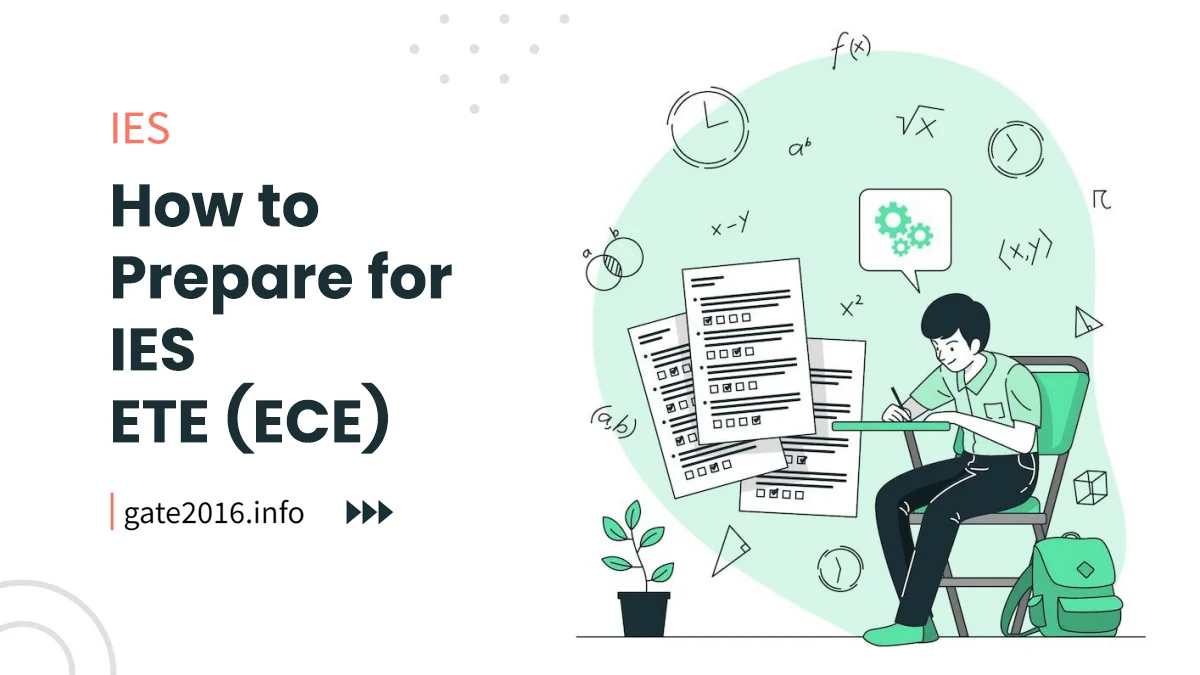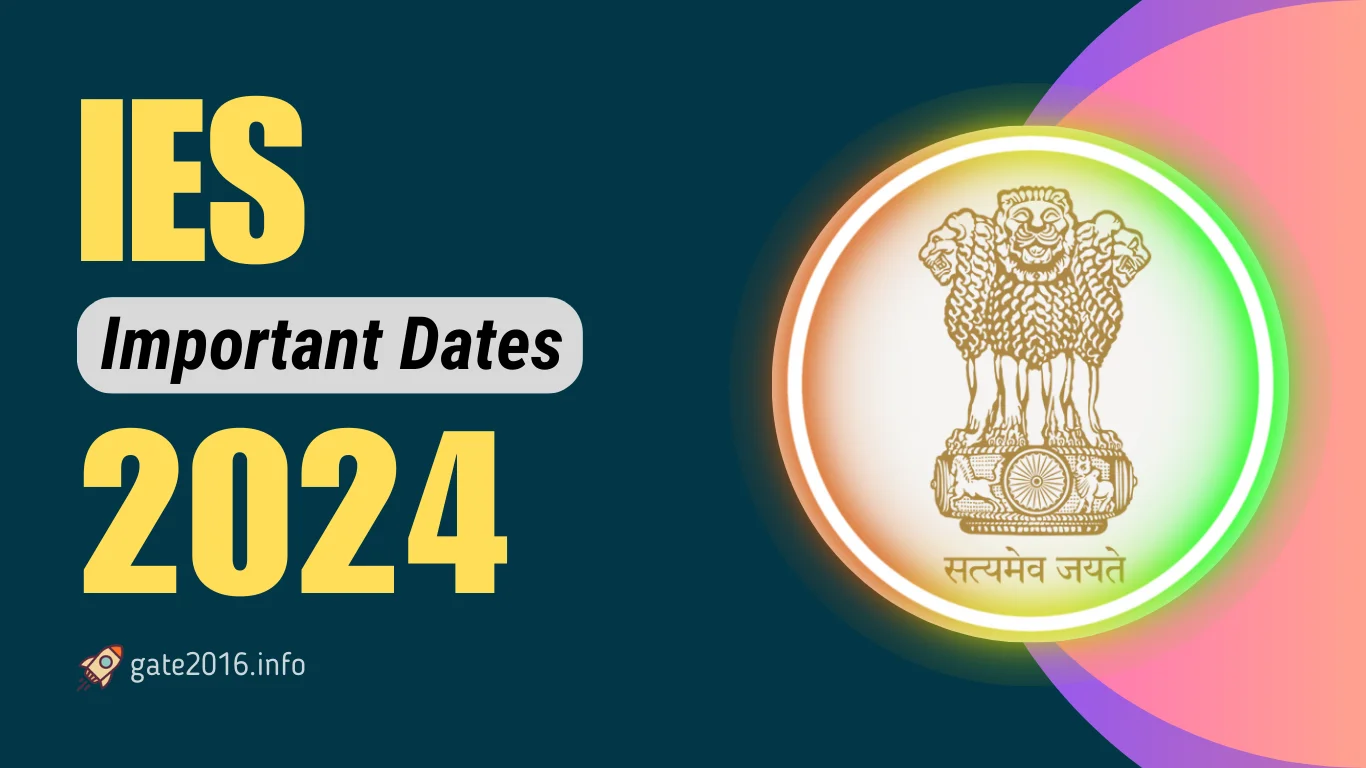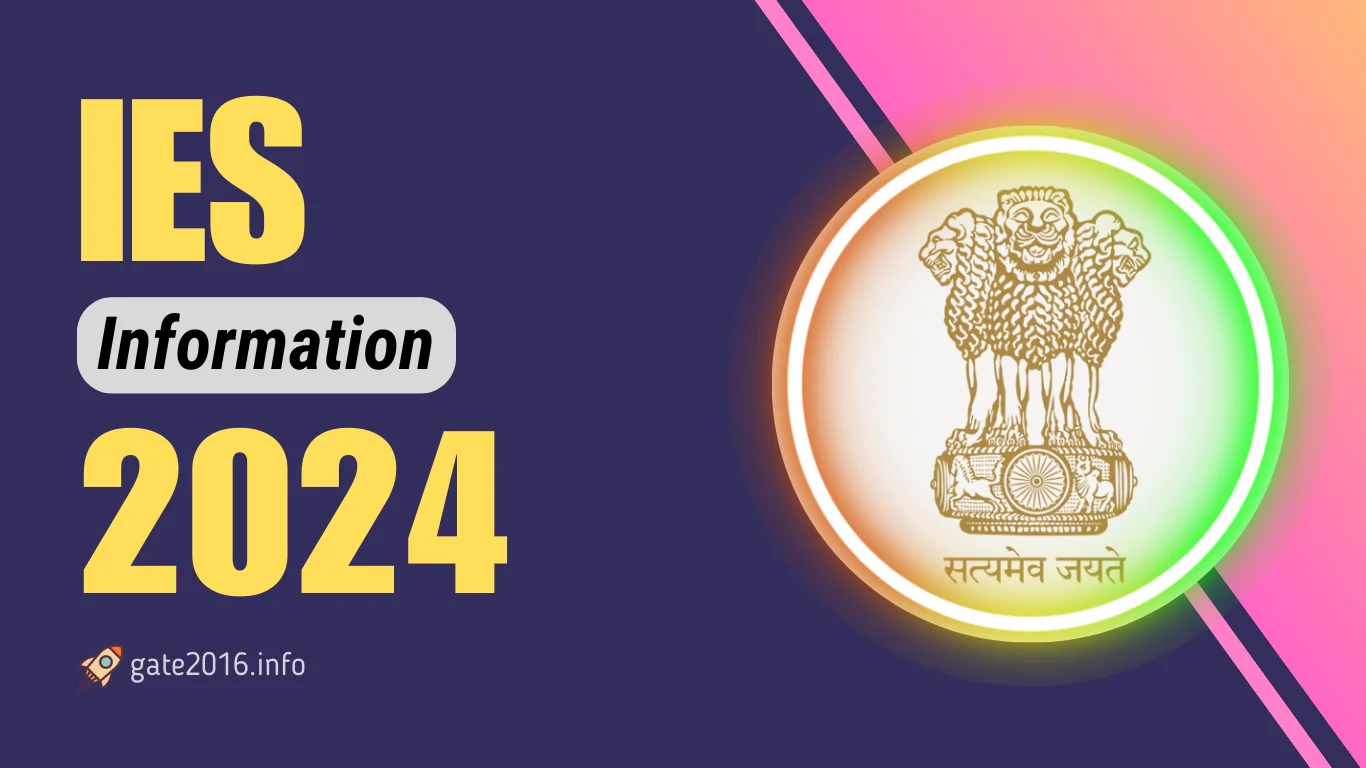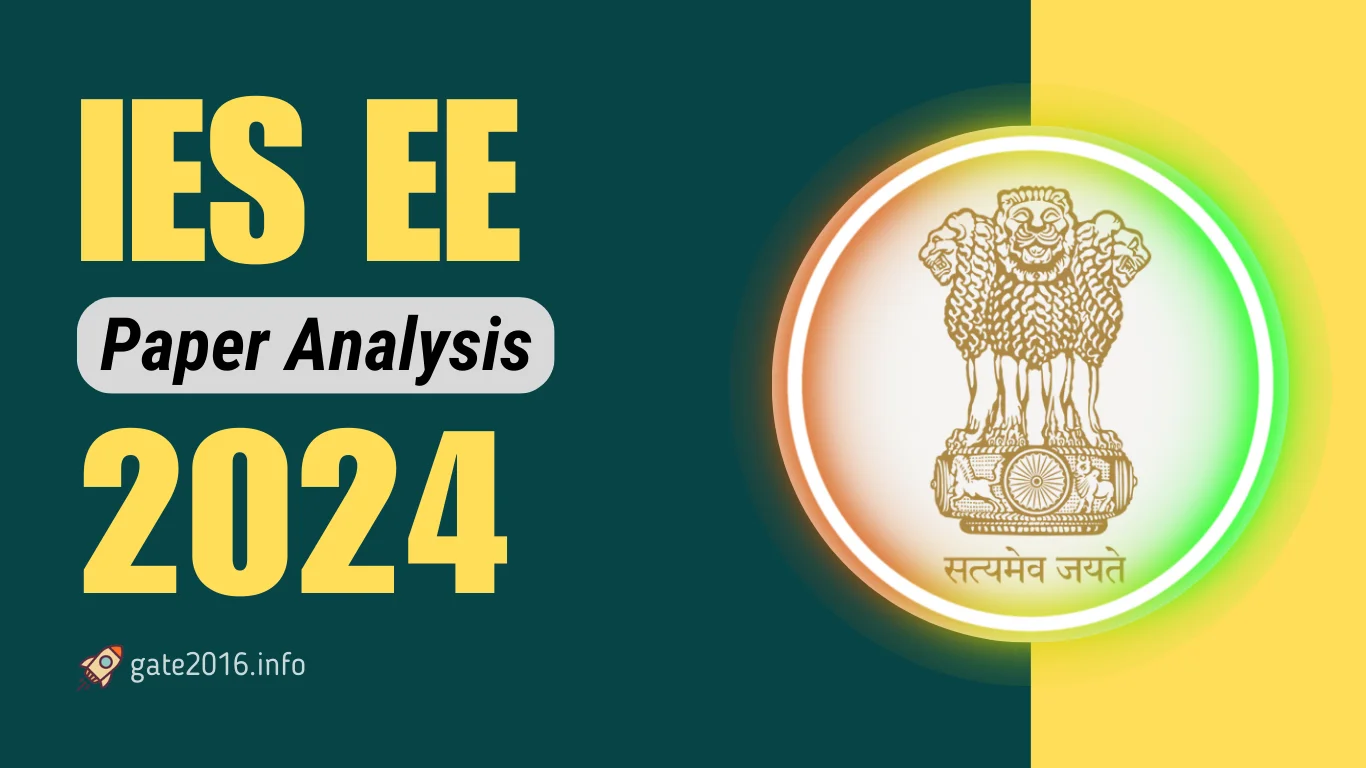Advertisements
Ratings

IES 2024 ETE Preparation – The IES (Indian Engineering Services) Electronics and Telecommunication Engineering exam is a crucial stepping stone for engineering graduates looking to build a successful career in government sectors related to electronics, communication, and technology.
To excel in this competitive exam, it’s essential to have a well-structured preparation strategy.
This comprehensive guide provides a step-by-step approach to preparing effectively for the IES Electronics and Telecommunication Engineering exam and achieving outstanding results.
Contents
- 1. Understanding the Significance of IES Electronics and Telecommunication Engineering
- 2. IES Electronics and Telecommunication Engineering Syllabus Overview
- 3. Understanding the IES Exam Pattern
- 4. Creating a Well-Structured Study Plan
- 5. Selecting Appropriate Study Materials
- 6. Mastering Core Electronics and Telecommunication Concepts
- 7. Enhancing Problem-Solving Skills
- 8. Reviewing Past Years’ Question Papers
- 9. Taking Mock Tests
- 10. Effective Time Management Strategies
- 11. Implementing Revision Techniques
- 12. Staying Updated with Technological Trends
- 13. Coping with Exam Stress
- 14. Final Weeks’ Preparation
- 15. On the Exam Day
- 16. Post-Exam Analysis and Next Steps
- Conclusion: Excelling in IES Electronics and Telecommunication Engineering
- Additional Resources and References
- IES Electronics and Telecommunication Engineering Guidance
- IES Electronics and Telecommunication Engineering Preparation FAQs
- IES Total Information & Guidance
1. Understanding the Significance of IES Electronics and Telecommunication Engineering
The IES Electronics and Telecommunication Engineering exam opens doors to lucrative career opportunities in government sectors such as telecommunications, electronics manufacturing, and IT.
This exam not only offers job security but also allows individuals to contribute to technology-driven initiatives that benefit the nation.
2. IES Electronics and Telecommunication Engineering Syllabus Overview
The IES Electronics and Telecommunication Engineering syllabus covers a wide range of subjects and topics.
Understanding the breakdown of subjects and identifying high-weightage topics is essential for focused preparation.
Table 1: IES Electronics and Telecommunication Engineering Syllabus Breakdown
| Subject | Key Topics |
|---|---|
| Networks | Network Theorems, Filters, Transmission Lines |
| Signals and Systems | Fourier Transforms, Z-Transforms |
| Electronic Devices | Diodes, Transistors, Amplifiers |
| Analog and Digital Circuits | Op-Amps, Logic Gates |
| Communication Systems | Modulation Techniques, Digital Modulation |
| Electromagnetic Theory | Maxwell’s Equations, Wave Propagation |
3. Understanding the IES Exam Pattern
Before diving into preparation, it’s essential to grasp the IES exam pattern:
- Preliminary Examination: Consists of objective papers including General Studies and Engineering Aptitude, and a specific Engineering Paper.
- Main Examination: Involves conventional papers focusing on electronics and telecommunication engineering disciplines.
- Personal Interview and Personality Test: Shortlisted candidates from the main exam are interviewed to assess their suitability for the role.
4. Creating a Well-Structured Study Plan
A structured study plan lays the foundation for effective preparation:
- Self-Assessment: Identify your strengths and weaknesses in different subjects.
- Study Schedule: Develop a daily or weekly schedule, allocating time for each subject.
- Regular Practice: Allocate time for solving practice problems and revising concepts.
- Mock Tests: Include regular mock tests to assess your progress and improve time management.
Table 2: Sample Study Plan
| Week | Subjects/Topics | Time Allocation |
|---|---|---|
| 1-2 | Networks, Signals and Systems | 12 hours/week |
| 3-4 | Electronic Devices, Analog and Digital Circuits | 10 hours/week |
| 5-6 | Communication Systems, Electromagnetic Theory | 12 hours/week |
5. Selecting Appropriate Study Materials
Choosing the right study materials is crucial for comprehensive learning:
Table 3: Recommended Study Resources
| Subject | Books | Online Resources |
|---|---|---|
| Networks | “Network Analysis” by M.E. Van Valkenburg | NPTEL’s Electronics and Communication Courses |
| Signals and Systems | “Signals and Systems” by Alan V. Oppenheim | Coursera’s Signal Processing Courses |
| Electronic Devices | “Electronic Devices and Circuit Theory” by Robert L. Boylestad | edX’s Electronics and Telecommunication Courses |
| Analog and Digital Circuits | “Microelectronic Circuits” by Adel S. Sedra | YouTube Lectures on Analog and Digital Circuits |
| Communication Systems | “Communication Systems” by Simon Haykin | MIT OpenCourseWare Communication Systems |
| Electromagnetic Theory | “Engineering Electromagnetics” by William Hayt | Khan Academy’s Electromagnetic Theory |
6. Mastering Core Electronics and Telecommunication Concepts
Strengthen your understanding of core concepts:
- Networks: Grasp network theorems, filters, and transmission lines.
- Signals and Systems: Understand Fourier transforms, Laplace transforms, and Z-transforms.
- Electronic Devices: Familiarize yourself with diodes, transistors, and amplifiers.
7. Enhancing Problem-Solving Skills
Regular practice of problem-solving is key:
- Diverse Problem Sets: Solve problems of varying complexity to enhance problem-solving skills.
- Real-World Application: Apply electronics and telecommunication principles to practical scenarios.
8. Reviewing Past Years’ Question Papers
Solving previous years’ question papers provides insights:
Table 4: Benefits of Solving Past Years’ Papers
| Benefit | Description |
|---|---|
| Identify Question Patterns | Recognize recurring question types |
| Time Management | Practice time management during the exam |
| Focus on Key Topics | Understand distribution of questions |
| Self-Assessment | Evaluate your level of preparedness |
9. Taking Mock Tests
Mock tests simulate exam conditions and assess readiness:
Table 5: Benefits of Taking Mock Tests
| Benefit | Description |
|---|---|
| Simulate Exam Conditions | Experience time constraints and exam pressure |
| Time Management | Enhance time allocation for each section |
| Performance Analysis | Identify strengths and weaknesses |
| Build Confidence | Boost confidence for the actual exam |
10. Effective Time Management Strategies
Efficient time management is essential during the exam:
- Preliminary Examination: Allocate time based on the number of questions in each paper.
- Main Examination: Distribute time based on the complexity of questions.
11. Implementing Revision Techniques
Structured revision is crucial for retaining information:
- Concise Notes: Prepare concise notes for quick revision.
- Flashcards: Use flashcards for formulas, theorems, and key concepts.
12. Staying Updated with Technological Trends
Stay abreast of the latest advancements in electronics and telecommunication:
- Journals and News: Follow industry journals and news sources.
- Technological Advances: Explore emerging technologies like 5G, IoT, and AI.
13. Coping with Exam Stress
Effective stress management is crucial for optimal performance:
- Stress-Relief Techniques: Practice meditation, deep breathing, or exercise to alleviate stress.
- Mindfulness: Incorporate mindfulness techniques to maintain focus and concentration.
14. Final Weeks’ Preparation
In the final weeks leading up to the exam, focus on fine-tuning your knowledge:
- Focused Revision: Revise complex topics and formulas.
- Mock Tests: Take additional mock tests for a final round of practice.
15. On the Exam Day
Remain calm and focused on the exam day:
- Read Carefully: Carefully read and analyze questions before attempting them.
- Time Allocation: Allocate time based on question complexity.
16. Post-Exam Analysis and Next Steps
Evaluate your performance and plan for the future:
- Performance Evaluation: Analyze your performance and identify areas for improvement.
- Future Plans: Consider advanced studies or career opportunities based on your results.
Conclusion: Excelling in IES Electronics and Telecommunication Engineering
Following the comprehensive strategies outlined in this guide equips aspiring electronics and telecommunication engineers with the tools needed for successful IES Electronics and Telecommunication Engineering exam preparation.
Success in this exam not only opens doors to prestigious career options but also allows individuals to contribute to technological advancements in the nation.
Additional Resources and References
Explore the recommended textbooks, online courses, and practice papers mentioned in this guide for additional study materials and references.
These resources will further enhance your understanding and preparation for the IES Electronics and Telecommunication Engineering exam.
IES Electronics and Telecommunication Engineering Guidance
IES Electronics and Telecommunication Engineering Preparation FAQs
What is IES Electronics and Telecommunication Engineering (E&T)?
IES Electronics and Telecommunication Engineering is a competitive examination conducted by the Union Public Service Commission (UPSC) in India.
It is part of the Indian Engineering Services (IES) examination and is conducted to recruit engineers for various government departments and organizations.
IES E&T assesses candidates' knowledge and skills in electronics and telecommunications engineering.
What are the important subjects to focus on for IES E&T preparation?
Key subjects to focus on include electronic circuits, communication systems, digital electronics, control systems, signals and systems, electromagnetic fields, and microprocessors.
The IES E&T syllabus covers a wide range of topics in electronics and telecommunications engineering.
How should I prepare for the IES E&T exam?
Effective preparation involves a comprehensive approach:
- Create a structured study plan based on the IES E&T syllabus.
- Utilize standard textbooks and reference materials for each subject.
- Solve previous years' question papers and practice mock tests to get a feel for the exam pattern.
- Focus on numerical problem-solving and conceptual understanding.
- Stay updated with current trends in electronics and telecommunications engineering.
Are there any recommended books or resources for IES Electronics and Telecommunication Engineering preparation?
Yes, some recommended books and resources include:
- 'Electronics Devices and Circuits' by Robert L. Boylestad and Louis Nashelsky
- 'Communication Systems' by Simon Haykin
- 'Digital Electronics' by R.P. Jain
- 'Control Systems Engineering' by Norman S. Nise
- 'Signals and Systems' by Alan V. Oppenheim, Alan S. Willsky, and S. Hamid Nawab
- Online courses, lecture videos, and research papers from reputable institutions and platforms related to electronics and telecommunications engineering.
What is the exam pattern for IES Electronics and Telecommunication Engineering, and how should I approach it?
IES E&T consists of a written examination followed by an interview. The written examination typically comprises two papers—Paper I (Objective) and Paper II (Conventional).
Paper I consists of multiple-choice questions, while Paper II involves descriptive answers.
To approach it effectively, practice time management, work on problem-solving skills, and focus on both theoretical and practical aspects of electronics and telecommunications engineering.
Additionally, prepare for the interview by revising core concepts and staying updated with industry developments.
Recent Posts
- IES 2024 Expected Cut-off Marks: Prelims and Mains
- How to Prepare for IES Electrical Engineering: A Comprehensive Guide
- How to Prepare for IES Electronics Engineering: A Comprehensive Guide
- IES 2024 Vacancy – Branch-wise and Category-wise Distribution
Related Tags
How to prepare for ies electronics engineering quora 2024, How to prepare for ies electronics engineering pdf 2024, ies electronics and telecommunication syllabus 2024, ies ece syllabus 2024, ies syllabus for electronics and communication engineering pdf 2024, ies syllabus for electrical engineering 2024, ies ee syllabus pdf 2024, ies engineering mathematics syllabu 2024
| IES/ESE GS & EA Books |
| IES/ESE Guide Books |
IES Total Information & Guidance
Click below given links to get further information.





